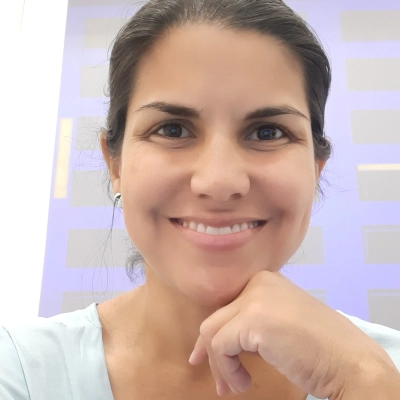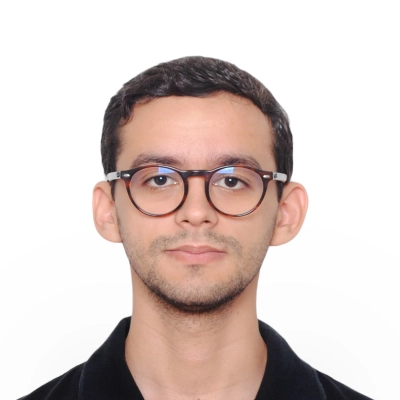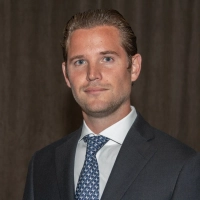Remote patient monitoring is transforming healthcare delivery, offering new ways to provide care beyond traditional settings. This article explores effective strategies for implementing and optimizing remote monitoring programs, drawing on insights from healthcare professionals across various specialties. From leveraging websites for virtual consultations to utilizing wearable devices for early detection, these expert-backed approaches aim to enhance patient care, improve outcomes, and streamline healthcare processes.
- Surgeon Leverages Website for Remote Consultations
- Wearable ECG Device Enables Early Detection
- Simplify Remote Monitoring with Clear Protocols
- Pair Data Points with Counselor Check-ins
- Cell-Enabled Devices Boost Patient Engagement
- Empower Clients Through Data Demonstrations
- Reduce Noise in Remote Patient Monitoring
- Align Stakeholders with Economic Advantages
- Streamline Orthodontic Monitoring via Phone Scans
- Virtual Consultations Extend Surgical Care Reach
- Integrate Biometrics into Counseling Workflows
Surgeon Leverages Website for Remote Consultations
As a breast surgeon, some patients consult me via my website for their annual check-up. The first thing I do is conduct a video call consultation to ask them a series of questions and calculate their relative risk of breast cancer. Once I have done this, if the patient is at low risk, I continue to monitor them remotely. After this initial consultation, patients can upload their imaging tests to the website, and I review them to provide my final report. I always make it clear that if at any time something seems to be out of order, an in-person consultation is imperative and cannot wait. The remote approach has also helped me keep track of patients who live far away and are undergoing follow-up care after breast cancer.
What contributes to its effectiveness is my commitment to these patients. I always set aside time to check the website, schedule new patients, and review previous patients’ tests. It is definitely a tool that I use in my regular practice.
 Maybell Nieves
Maybell Nieves
Surgical Oncologist, AlynMD
Wearable ECG Device Enables Early Detection
I was part of a team that implemented a remote patient monitoring program for a 72-year-old with atrial fibrillation. He used a wearable ECG device to track heart rhythm and rate daily. When this device detects an irregular heart rate episode, the RPM system sends an alert to our care team. We review the data, conduct an online consultation, and adjust the patient’s medications to prevent a stroke or other complications. One key fact is that it helps with early detection and prevents potentially deadly complications in this particular case.
 Austin Anadu
Austin Anadu
Medical Doctor, AlynMD
Simplify Remote Monitoring with Clear Protocols
A simple remote patient monitoring program could start at the patient visit: identify eligible patients (those with hypertension, diabetes, or heart failure), enroll them before they leave, and provide them with pre-paired devices that send data over cellular networks (keeping in mind that this is primarily for elderly patients). Conduct a 10-minute teach-back session, then stream readings into one EHR-linked dashboard with three tiers: green, yellow (triggering a nurse call and coaching), and red (prompting a same-day medication check or urgent visit). Utilize standing protocols so nurses can act without delays, send brief daily nudges and a weekly check-in, and establish clear cutoffs for escalation. The key factor is simplicity: one screen, pre-paired devices, and clear thresholds.
 Julio Baute
Julio Baute
Medical Doctor, Invigor Medical
Pair Data Points with Counselor Check-ins
The main obstacle for Ocean Recovery when integrating remote monitoring for eating disorder clients involved maintaining proper client accountability with compassionate care. The organization implemented performance indicators that served as warning signs for early intervention without creating excessive burden on clients. The most effective factor was pairing every monitored data point with a counselor’s check-in. The clients recognized that health and wellness were more important than numbers. The combination of these dual methods decreased client relapse occurrences and strengthened their confidence in the treatment program. A monitoring system should prioritize client emotional requirements instead of focusing solely on clinical indicators.
 Maddy Nahigyan
Maddy Nahigyan
Chief Operating Officer, Ocean Recovery
Cell-Enabled Devices Boost Patient Engagement
Adapting technology to the needs of the patient was the key to our success in implementing a remote patient monitoring program within our healthcare organization. What we learned is that one-size-fits-all fails fast. Rather than relying on Bluetooth devices, which are tied to smartphone presence and tech-savvy users by default, we nearly exclusively relied on cell-enabled devices. Most of the patients we serve are elderly with poor technology literacy, and sometimes they do not have a stable digital connection for Wi-Fi, so receiving out-of-the-box support (no pairing, no apps) was hugely helpful. The unintended consequence was that more people used the technology, which is an approachable tool with a simple interface. This reduced attrition and resulted in fewer technical support phone calls, leading to better clinical outcomes and happier care teams.
Demonstrations with vendors (not slick sales pitches, but actual use cases that mirrored our patients) were crucial to making the program work. We also created test groups for both Bluetooth and cellular models running simultaneously, allowing us to identify potential friction points. The observations were quick: the patients wanted ease, and the staff needed dependability. Even more compactly: pick your RPM tools the way you pick a hiking companion – not necessarily one that looks the best in their new gear, but rather one who is reliable, solid, and can read the landscape.
 Jeremy Gurewitz
Jeremy Gurewitz
Co-Founder & CEO, Solace Health
Empower Clients Through Data Demonstrations
My primary goal when launching remote monitoring at Epiphany Wellness was to establish a system that clients could control. My personal experience in long-term recovery helps me understand that forced compliance methods are not effective. We empowered clients through demonstrations which connected sleep tracking and heart rate variability data to their recovery progress. The success factor relied on empowerment since we transformed monitoring into a celebration tool for client achievements. The system achieved high client adoption and engagement levels after patients discovered personal benefits beyond clinic interests.
 Ryan Hetrick
Ryan Hetrick
CEO & Co-Founder, Epiphany Wellness
Reduce Noise in Remote Patient Monitoring
We work with health apps collecting passive data from wearables, and while we don’t run RPM programs directly, we see interesting patterns in the data infrastructure side.
The hypothesis from our API usage: successful RPM might be less about what you monitor and more about reducing noise.
Our platform could theoretically identify which patients deviate from their personal baselines rather than population averages. A researcher could use our tools to test whether personalized thresholds reduce alert fatigue compared to fixed limits.
The technical challenge we see: most RPM systems can’t handle the data volume needed for true baseline analysis. You’d need weeks of individual data before making meaningful comparisons.
It would be interesting to study whether baseline-relative monitoring actually improves adherence – we have the infrastructure to test it but haven’t run that specific analysis.
 Alexei Brown
Alexei Brown
Developer Experience, Sahha.ai
Align Stakeholders with Economic Advantages
The process of implementing remote patient monitoring depended less on equipment technology than it did on establishing financial and operational systems that would support their implementation. Soba New Jersey conducted feasibility assessments by analyzing device expenses against projected savings through decreased hospital readmissions. The program required investment stakeholders, medical staff, and health insurance providers to unite through a single model. The quick adoption occurred when all stakeholders recognized the economic advantages. A structured approach to reimbursement planning at the beginning ensured the monitoring program did not create financial difficulties. The first step in my approach would be to execute a feasibility study which links patient results to financial measurements.
 Brian Chasin
Brian Chasin
CFO & Co-Founder at Soba New Jersey, SOBA New Jersey
Streamline Orthodontic Monitoring via Phone Scans
Remote monitoring in orthodontics extends beyond patient vital signs because it tracks the progression of treatment. At Kunik Orthodontics, we used scanning applications that enabled patients to transmit pictures of their teeth between appointments. The most important factor for success was ease of use, since patients needed less than two minutes to scan their teeth using their phones. Patient compliance increased dramatically while we detected problems sooner, which cut down on chair time. My advice: remove barriers to participation. The process becomes more consistent when it remains simple.
 Randy Kunik
Randy Kunik
CEO & Founder, Kunik Orthodontics
Virtual Consultations Extend Surgical Care Reach
Our implementation of remote patient care began with introducing virtual consultations in our surgical practice, specifically designed to serve patients who lived out of state. We developed a comprehensive approach that included structured pre-surgical virtual meetings where we could assess patient needs and establish personalized treatment plans. The program’s effectiveness largely stemmed from our focus on continuity of care, ensuring patients received consistent support both before and after their procedures. By creating tailored treatment plans with integrated virtual follow-ups, we maintained high-quality care standards despite the physical distance between our team and patients. This patient-centered approach allowed us to extend our services beyond geographical limitations while maintaining the quality of care our practice is known for.
 David Hill MD
David Hill MD
Plastic Surgeon & Medical Director, Fulcrum Aesthetics & Surgery
Integrate Biometrics into Counseling Workflows
The remote monitoring system at Paramount Wellness Retreat provided continuous support to clients who had finished their residential program. The system achieved success by integrating patient biometric data into counseling staff workflows, which enabled them to detect relapse warning signs before major issues developed. The system’s success was further enhanced through ongoing feedback mechanisms, which directed both device selection and data reporting based on client feedback. The monitoring system provided both clients and staff members with effective tools that met their requirements. The program required adaptability, as technology needs continuous development to keep pace with program evolution.
 Joshua Zeises
Joshua Zeises
CEO & CMO, Paramount Wellness Retreat













